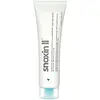What's inside
What's inside
 Key Ingredients
Key Ingredients

 Benefits
Benefits

 Concerns
Concerns

 Ingredients Side-by-side
Ingredients Side-by-side

Water
Skin ConditioningGlycerin
HumectantButylene Glycol
HumectantMethylpropanediol
Solvent1,2-Hexanediol
Skin ConditioningPropanediol
SolventGlyceryl Polymethacrylate
Dioscorea Japonica Root Extract
Skin ConditioningPropylene Glycol
HumectantLaminaria Japonica Extract
Skin ProtectingHibiscus Esculentus Fruit Extract
Skin ConditioningPalmitoyl Tripeptide-1
Skin ConditioningCorchorus Olitorius Leaf Extract
Skin ConditioningArginine
MaskingPanthenol
Skin ConditioningNelumbo Nucifera Root Extract
Skin ConditioningHydroxyacetophenone
AntioxidantPolyglutamic Acid
Skin ConditioningGlycereth-25 PCA Isostearate
EmulsifyingHyaluronic Acid
HumectantHydrolyzed Hyaluronic Acid
HumectantSodium Hyaluronate
HumectantCeramide NP
Skin ConditioningBetaine
HumectantCholesterol
EmollientCarbomer
Emulsion StabilisingCaprylic/Capric Triglyceride
MaskingPhytosphingosine
Skin ConditioningXanthan Gum
EmulsifyingStearic Acid
CleansingOleic Acid
EmollientHydrogenated Lecithin
EmulsifyingSodium Lactate
BufferingSodium Polyacrylate
AbsorbentLactic Acid
BufferingCaprylyl Glycol
EmollientEthylhexylglycerin
Skin ConditioningCaprylhydroxamic Acid
Water, Glycerin, Butylene Glycol, Methylpropanediol, 1,2-Hexanediol, Propanediol, Glyceryl Polymethacrylate, Dioscorea Japonica Root Extract, Propylene Glycol, Laminaria Japonica Extract, Hibiscus Esculentus Fruit Extract, Palmitoyl Tripeptide-1, Corchorus Olitorius Leaf Extract, Arginine, Panthenol, Nelumbo Nucifera Root Extract, Hydroxyacetophenone, Polyglutamic Acid, Glycereth-25 PCA Isostearate, Hyaluronic Acid, Hydrolyzed Hyaluronic Acid, Sodium Hyaluronate, Ceramide NP, Betaine, Cholesterol, Carbomer, Caprylic/Capric Triglyceride, Phytosphingosine, Xanthan Gum, Stearic Acid, Oleic Acid, Hydrogenated Lecithin, Sodium Lactate, Sodium Polyacrylate, Lactic Acid, Caprylyl Glycol, Ethylhexylglycerin, Caprylhydroxamic Acid
Water
Skin ConditioningGlycerin
HumectantCyclopentasiloxane
EmollientSodium Acrylate/Sodium Acryloyldimethyl Taurate Copolymer
Emulsion StabilisingDimethicone
EmollientCyclohexasiloxane
EmollientIsohexadecane
EmollientPhenoxyethanol
PreservativeCaprylyl Glycol
EmollientPolysorbate 80
EmulsifyingLecithin
EmollientPolysilicone-11
Hydroxypropyl Cyclodextrin
MaskingPalmitoyl Tripeptide-38
Skin ConditioningHexanoyl Dipeptide-3 Norleucine Acetate
Skin ConditioningS-Mu-Conotoxin Cniiic Acetate
Skin ConditioningWater, Glycerin, Cyclopentasiloxane, Sodium Acrylate/Sodium Acryloyldimethyl Taurate Copolymer, Dimethicone, Cyclohexasiloxane, Isohexadecane, Phenoxyethanol, Caprylyl Glycol, Polysorbate 80, Lecithin, Polysilicone-11, Hydroxypropyl Cyclodextrin, Palmitoyl Tripeptide-38, Hexanoyl Dipeptide-3 Norleucine Acetate, S-Mu-Conotoxin Cniiic Acetate
 Reviews
Reviews

Ingredients Explained
These ingredients are found in both products.
Ingredients higher up in an ingredient list are typically present in a larger amount.
Caprylyl Glycol is a humectant and emollient, meaning it attracts and preserves moisture.
It is a common ingredient in many products, especially those designed to hydrate skin. The primary benefits are retaining moisture, skin softening, and promoting a healthy skin barrier.
Though Caprylyl Glycol is an alcohol derived from fatty acids, it is not the kind that can dry out skin.
This ingredient is also used as a preservative to extend the life of products. It has slight antimicrobial properties.
Learn more about Caprylyl GlycolGlycerin is already naturally found in your skin. It helps moisturize and protect your skin.
A study from 2016 found glycerin to be more effective as a humectant than AHAs and hyaluronic acid.
As a humectant, it helps the skin stay hydrated by pulling moisture to your skin. The low molecular weight of glycerin allows it to pull moisture into the deeper layers of your skin.
Hydrated skin improves your skin barrier; Your skin barrier helps protect against irritants and bacteria.
Glycerin has also been found to have antimicrobial and antiviral properties. Due to these properties, glycerin is often used in wound and burn treatments.
In cosmetics, glycerin is usually derived from plants such as soybean or palm. However, it can also be sourced from animals, such as tallow or animal fat.
This ingredient is organic, colorless, odorless, and non-toxic.
Glycerin is the name for this ingredient in American English. British English uses Glycerol/Glycerine.
Learn more about GlycerinWater. It's the most common cosmetic ingredient of all. You'll usually see it at the top of ingredient lists, meaning that it makes up the largest part of the product.
So why is it so popular? Water most often acts as a solvent - this means that it helps dissolve other ingredients into the formulation.
You'll also recognize water as that liquid we all need to stay alive. If you see this, drink a glass of water. Stay hydrated!
Learn more about Water